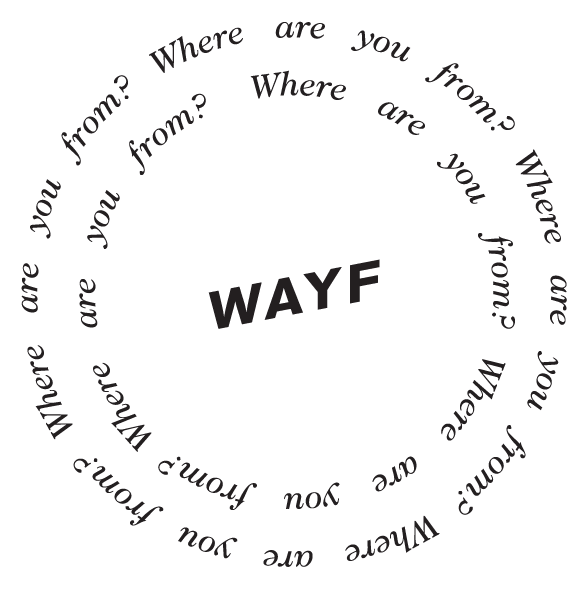Angela Serrano
I have not been asked where I’m from in a long time. Not even the milder versions like ‘Where’s that accent from?’ or ‘What’s your background?’ It means my strategy is working. If you check out my Instagram, you’ll find an assortment of photos of me wearing colourful cosplay wigs, authentic vintage Australian clothes, and Australian-made yoga wear – as a daily practise, not just something to do in selfies and photo shoots. These days, the first thing people tend to ask me instead of ‘Where are you from?’ is ‘Is your hair real?’ or ‘Do you go to art school?’
I used to be asked ‘Where are you from?’ a lot. I came to Melbourne from the Philippines as an international student doing a PhD on a scholarship. I’m on the lighter shade of dark and I’ve had long black hair for most of my life. Many people saw me as ‘Asian’, but not always ‘Filipino’. Several people thought I was Russian or South-American.
Because I speak good English but do not have a stereotypical Australian accent. A lot of people presumed I went to an international school, or that I grew up in America. The idea that someone who grew up in an Asian country could speak excellent English was obviously not popular in Australia. Sometimes I say, ‘I’m Spanish on my mother’s side’, which is true. It seems like it should matter, because it mattered enough for my mum to tell me about it. But people tend to obsess over my Asian-ness, especially when they find out I do apparently non-Asian things, like cook pasta, speak English well, pursue acting and modelling and photography, write poetry and do academic research.
‘Where are you from?’ seems like such an innocent question. But it can be confronting, especially for someone who gets asked so frequently. I hate it the most when it’s coming from white men I have never met before. When they give me a long sticky once-over and pop the question, it feels like they’re comparing me to other Asian or dark-skinned girls they’ve had sex with. It feels like they’re trying to figure out if I’m going to be an easy conquest.
To them, Asian girls like me are supposed to be so unambitious that the most exciting thing in our lives is the prospect of sleeping with a mediocre white man who will put in minimal work. Then the minute after I reject their projected fantasies of my availability – they treat me with an iceberg coldness that could bisect a whole fleet of Titanics. Sure, it’s natural to be curious about people you’ve never met but if you’re more interested in where you think or hope I’m from, than who I am and what I’ve done with my life, it’s obvious that you’re more interested in what I can do for your ego than what actually makes me special: the choices I’ve made, the things I’ve done, the dreams I am passionate about, the way I relate to people.
I started wearing wigs last year. I had tried colouring my hair but bleaching my thick black hair took ages, cost heaps, gave me a nasty peroxide burn. I do a lot of high-intensity yoga and shower afterward so I lost the hair colour after a week. Not worth it, I reckoned, and wigs meant I could have any hair length and colour I wanted for so much cheaper. I started wearing Australian vintage clothes after learning that op shops could yield affordable and beautiful finds that look fabulous on my Mediterranean body shape. I didn’t start all of this as an identity project but I soon noticed that people reacted to me differently when they saw my colourful hair and unusual outfits.
These days, conversations no longer start and end with interrogations about my identity. I feel freer to talk about things that mean more to me than birth circumstances I did not choose. I ceased to be just another Asian girl and became a mermaid princess. I still stood out as a visibly different person in the crowd so I still end up in trouble sometimes. But at least this way I don’t have to improvise stories about being a mixed-ancestry person from Hawaii and testing my acting skills on unimaginative people obsessed with race.



